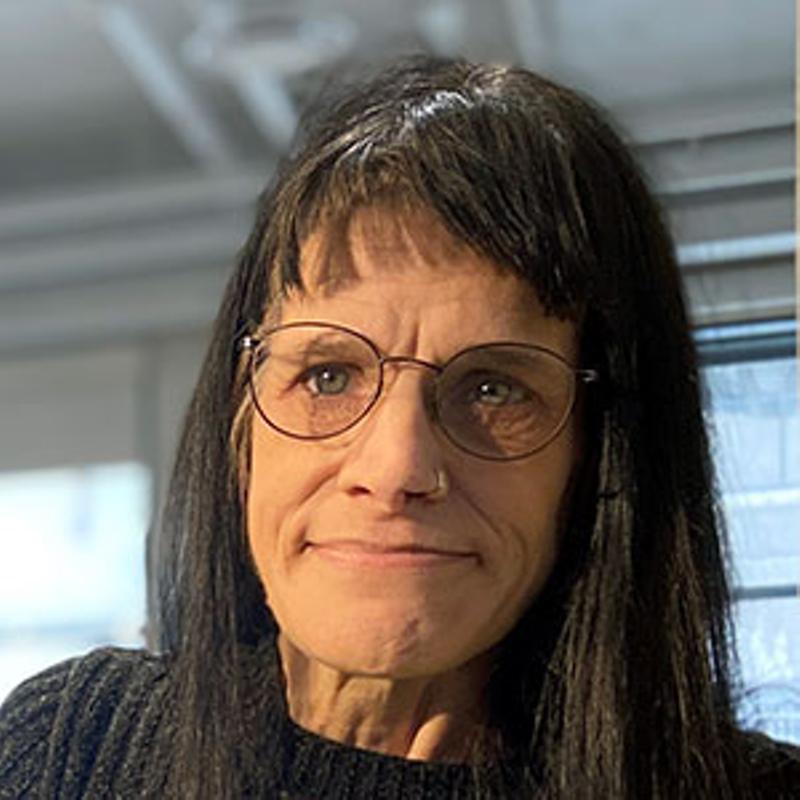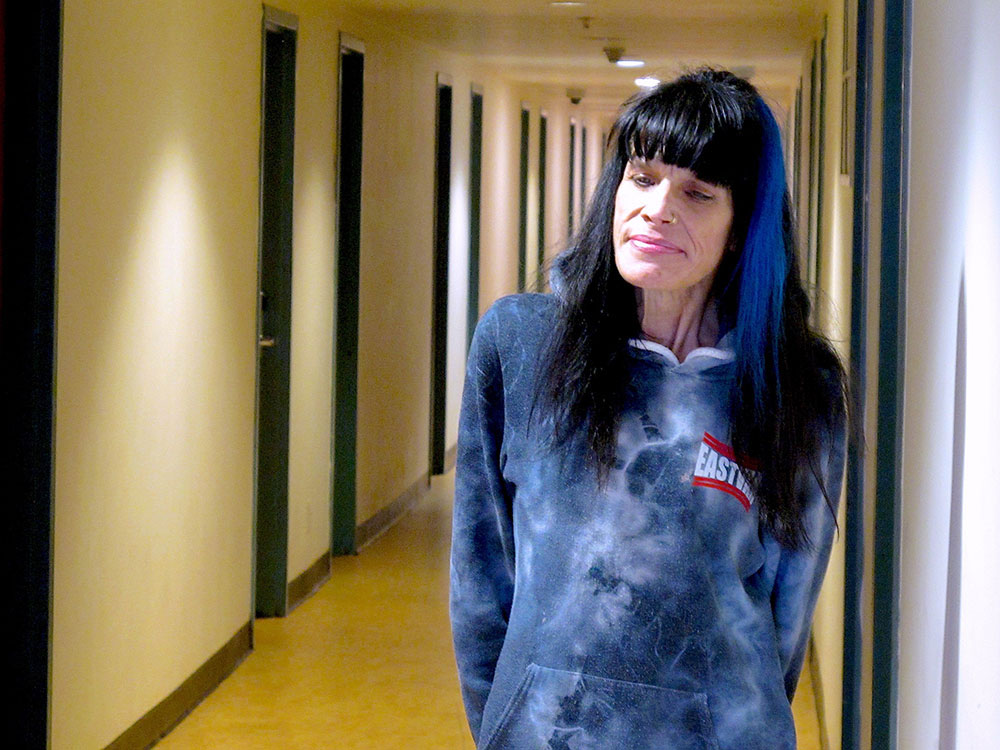[Editor’s note: This story contains graphic descriptions of fatal medical emergencies and death. It may be triggering to some readers]
The Downtown Eastside is my home. One thing I appreciate about living there is the sense of community. But what I have observed is that death in my neighbourhood doesn't feel respectable to either the deceased, or the community members.
First responders will often drag a person in need of care out of their room and into the hallway. That allows them to have enough space for medical equipment and for the first responders to do what they are there to do: try to save a life as they perform cardiopulmonary resuscitation.
It is traumatizing to witness someone dying or being worked on through CPR. It’s hard to watch as first responders are applying hard chest compressions that make a person’s body move a lot. When an oxygen bag is being used to try to force air into the lungs of the patient, the air will come back out of their mouth, causing their lips to vibrate and make an unmistakable sound.
You keep hoping that the CPR is going to work. You are watching as the patient's lungs temporarily fill with air and then deflate again. If the person has not been able to start breathing on their own, the first responders will keep applying the chest compressions. It is a helpless feeling when all you can do is watch in horror as your friend is not being successfully resuscitated.
Seeing the person laying there afterwards, with no signs of life — well, those are pictures that have been permanently burned into my memories. It's not the last way you want to see or remember someone.
I live on the western edge of Vancouver’s Downtown Eastside, on what was previously known as the food floor at the old Woodward’s department store. In 2002, I was part of the “Woodsquat” protests that occupied the then-abandoned building. Protesters set up camp for three months to demand that social housing was built on the site.
Now the building is called Woodward’s Community Housing and is run by the PHS Community Services Society. Woodward’s provides 125 self-contained, single rooms of adult-only, low-income housing. Each room has its own bathroom with a shower and a bathtub, and a kitchen with a sink, a full-size fridge and stove. The rooms are big enough to have a twin-size bed in them. Many of the suites are occupied by two or more people, and sometimes their pets.
The way that a death is dealt with within this neighbourhood often feels like we are disposable because we don’t have as much money as other people in other communities.
Amidst so much death, where is the dignity?
No matter how many times I see someone being revived or not surviving CPR, it doesn't get any easier. That is especially true when it is someone I know. I have brought back numerous people through the administration of naloxone, the injectable opioid agonist that can reverse the effects of an opioid overdose. It's always good when someone survives. Thankfully I have never had to experience how it feels when the person does not survive under my care.
Unfortunately, many of my community members have felt the pain and trauma of losing someone they tried hard to save. B.C. is losing six people every day to toxic drugs.
When someone is deceased and there are first responders on the scene, there aren’t privacy barriers, such as plastic sheets or tarps, to help protect the public from having to witness it. To me, this violates the dignity of the person who has died. The person is out on display, and their presence can traumatize passersby. It can also risk causing friends or family members, who may show up on the scene, further trauma on top of the already traumatizing loss of a loved one.
I realize that the first responders have a job to do. However, I wonder if they truly understand how traumatizing it is for people to witness this whole process. If a person does not get successfully revived, it is hard not to be personally traumatized by witnessing their death, especially if the person is a family member or friend.
In my building on my floor, three people died within two-and-a-half months of each other. I considered two of them close friends.
Recently a close friend I have known for 20 years, who lived down the hall from me, passed away. The first responders tried for 45 minutes to revive him. After they pronounced the time of death they packed up their equipment and left. The residents went back into their rooms and my friend was left in the middle of the hallway. One police officer stayed to wait for the coroner to arrive.
From the time that the first responders were doing CPR to the time afterwards, when they were awaiting the coroner's arrival, no one was able to leave their suites.
The only way I would know if I was able to leave my room yet was to look out in the hallway where my friend was still lying. Seeing him there, lifeless and exposed for everyone to see, was hard and emotional.
It was also heartbreaking hearing my friend's sister and mother crying out loud in the hallway. It was hard for me because I was trying to process what I had witnessed prior to his mother's arrival.
A 20-year friendship was taken unexpectedly and tragically. I was an emotional wreck.
Sometime before the coroner got to the building, my 30-year-old son showed up to have a visit with me. When he was at the front door downstairs, one of the residents from a different floor recognized him as my son and let him in the building, not realizing what had taken place on my floor.
When my son stepped off the elevator, there was no way he could have known what he was walking into. My son walked part of the way down the long hallway and stopped when he saw someone lying there. When my son walked by he was shocked to recognize the young man as our friend. I don't think my son has ever been that close to a deceased person. There wasn't any kind of a cover over him. I know my son has been forever impacted by this, as have I and many others.
It got to the point that one of the other residents, also a long-time friend of the deceased, asked the first responder if they could please cover him up. The officer obliged. But why did he have to ask?
It would seem better for everyone — friends, family members and most importantly for the dignity and privacy for the deceased person — to do this as a matter of course.
A call for support
We need to change the way that deaths are dealt with in the Downtown Eastside. Having grief and loss support in the form of teams of trained professionals and people with lived experience would go a long way. When I lost my two close friends here in my building, there weren’t support services offered or suggested.
If there was an outreach team or even a grief and loss counsellor that could have been made available for anyone who may have wanted to access some kind of support, it could have been less traumatizing for those grieving the loss of a community member.
When I asked one of the nurses who was working at Woodward's about whether there was grief and loss support or counselling available for any of the residents in Woodward's, I was told that any residents wanting to access that kind of support would have to go to their own resources. She also said that if any of the PHS staff, including herself, have issues around grief and loss, they have counselling and support services for their employees if requested. It is available to them 24-7, 365 days a year. That support is not offered to the residents here. I feel that needs to change.
Every day we are dealing with deaths, most without professional help or guidance. Having people with lived experience paired with professionals and counsellors could be a great starting point for a pilot grief and loss outreach service.
People with lived experience, along with professional grief and loss counsellors or a counsellor that has experience with grief or even trauma counselling, could be beneficial to anyone.
If this kind of death was happening in a neighbourhood other than the Downtown Eastside, I wonder if people would be treated with more dignity. ![]()
Read more: Health, Rights + Justice, Housing
















Tyee Commenting Guidelines
Comments that violate guidelines risk being deleted, and violations may result in a temporary or permanent user ban. Maintain the spirit of good conversation to stay in the discussion.
*Please note The Tyee is not a forum for spreading misinformation about COVID-19, denying its existence or minimizing its risk to public health.
Do:
Do not: